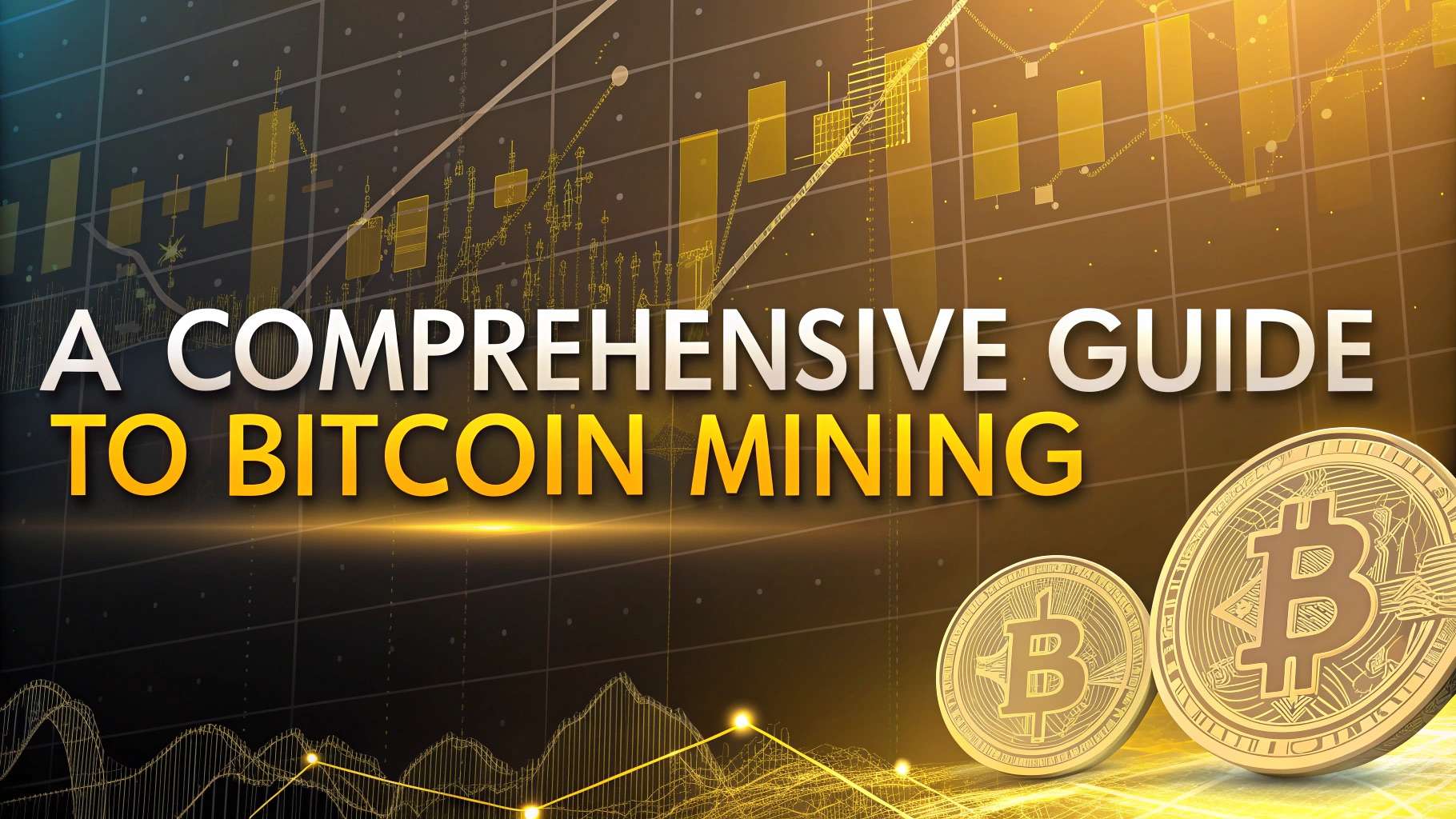The allure of digital gold has captivated many, leading them to explore the world of cryptocurrency and, more specifically, how to mine Bitcoin. Understanding the intricate process of Bitcoin mining is crucial before diving into the technical aspects. It’s not as simple as clicking a button; it requires significant investment in hardware, a deep understanding of blockchain technology, and a commitment to staying informed about the ever-changing landscape of cryptocurrency. This guide will provide a comprehensive overview of what it takes to successfully and effectively mine Bitcoin, from the initial setup to the ongoing challenges.
Understanding the Basics of Bitcoin Mining
Bitcoin mining is the process of verifying and adding new transaction records to Bitcoin’s public ledger, known as the blockchain. Miners use powerful computers to solve complex mathematical problems. The first miner to solve the problem gets to add the next block of transactions to the blockchain and is rewarded with newly minted Bitcoin.
The Role of Proof-of-Work
Bitcoin uses a consensus mechanism called Proof-of-Work (PoW). This requires miners to expend significant computational effort to solve the aforementioned complex problems. This effort makes it incredibly difficult and expensive for anyone to tamper with the blockchain, ensuring its security and integrity.
Setting Up Your Bitcoin Mining Operation
Before you begin, consider the resources you’ll need:
- Hardware: This is the most significant investment. You’ll need Application-Specific Integrated Circuits (ASICs), which are specifically designed for Bitcoin mining. CPUs and GPUs are no longer efficient enough;
- Software: You’ll need Bitcoin mining software to connect your hardware to the Bitcoin network. Examples include CGMiner, BFGMiner, and EasyMiner.
- Bitcoin Wallet: You’ll need a secure Bitcoin wallet to store your mined Bitcoin.
- Power Supply: ASICs consume a lot of power, so you’ll need a powerful and reliable power supply.
- Cooling System: Mining hardware generates significant heat, so you’ll need a robust cooling system to prevent overheating.
- Internet Connection: A stable and reliable internet connection is crucial for connecting to the Bitcoin network.
Choosing the Right Mining Hardware
The efficiency of your mining operation is directly related to the hardware you use. ASICs are the only viable option for solo mining these days. Consider factors like hash rate (the speed at which the miner can solve the problems), power consumption, and price when making your decision.
Joining a Bitcoin Mining Pool
Due to the increasing difficulty of Bitcoin mining, solo mining is often not profitable for individuals. Joining a mining pool allows miners to combine their computational power and share the rewards. This increases the chances of solving a block and earning Bitcoin.
Popular Mining Pools
Here are a few popular Bitcoin mining pools:
- AntPool: One of the largest mining pools, operated by Bitmain.
- Poolin: Another large and reputable mining pool.
- Slush Pool: The oldest Bitcoin mining pool.
The Profitability of Bitcoin Mining
Bitcoin mining profitability is a complex equation that depends on several factors:
- Bitcoin Price: The higher the price of Bitcoin, the more profitable mining will be.
- Mining Difficulty: The higher the mining difficulty, the more computational power is required to solve a block.
- Electricity Costs: Electricity costs are a significant expense for Bitcoin miners.
- Hardware Costs: The initial investment in mining hardware can be substantial.
- Pool Fees: Mining pools charge fees for their services.
Challenges and Considerations
Mining Bitcoin isn’t without its challenges. The increasing difficulty of Bitcoin mining means that you’ll need to constantly upgrade your hardware to remain competitive. Electricity costs can fluctuate, impacting profitability. Regulatory changes can also affect the viability of Bitcoin mining in certain regions. Finally, the environmental impact of Bitcoin mining is a growing concern, prompting research into more sustainable mining practices.
THE FUTURE OF BITCOIN MINING: INNOVATIONS AND SUSTAINABILITY
The Bitcoin mining landscape is constantly evolving, driven by technological advancements and growing concerns about environmental impact. Several innovations are emerging that promise to make Bitcoin mining more efficient and sustainable.
RENEWABLE ENERGY SOURCES
One of the most promising solutions is the adoption of renewable energy sources to power Bitcoin mining operations. Solar, wind, and hydroelectric power can significantly reduce the carbon footprint of Bitcoin mining. Many mining companies are now actively seeking out locations with abundant renewable energy resources.
IMMERSION COOLING
Immersion cooling is a technique where mining hardware is submerged in a dielectric fluid, which efficiently removes heat. This allows for higher hash rates and reduced energy consumption compared to traditional air cooling methods. Immersion cooling is gaining popularity as a way to improve the efficiency and sustainability of Bitcoin mining.
ALTERNATIVE CONSENSUS MECHANISMS
While Bitcoin’s Proof-of-Work (PoW) consensus mechanism is secure, it is also energy-intensive. Alternative consensus mechanisms, such as Proof-of-Stake (PoS), are being explored as potential replacements. PoS requires validators to stake their cryptocurrency holdings to validate transactions, which consumes significantly less energy than PoW. However, PoS also has its own security and decentralization challenges.
LEGAL AND REGULATORY CONSIDERATIONS
The legal and regulatory landscape surrounding Bitcoin mining varies significantly across different jurisdictions. Some countries have embraced Bitcoin mining, while others have imposed strict regulations or even outright bans. It’s crucial to understand the legal and regulatory framework in your region before starting a Bitcoin mining operation.
TAX IMPLICATIONS
Bitcoin mining is generally considered a taxable activity. The Bitcoin you earn from mining is typically treated as income and is subject to taxation. It’s important to keep accurate records of your mining activities and consult with a tax professional to ensure compliance with tax laws.
ENVIRONMENTAL REGULATIONS
As concerns about the environmental impact of Bitcoin mining grow, governments are increasingly considering environmental regulations. These regulations may include requirements for miners to use renewable energy sources, implement carbon offsets, or report their energy consumption. Staying informed about environmental regulations is essential for maintaining a compliant and sustainable Bitcoin mining operation.
OPTIMIZING YOUR MINING OPERATION
To maximize your profitability and efficiency, consider the following optimization strategies:
– Overclocking: Overclocking your mining hardware can increase its hash rate, but it also increases power consumption and heat generation; Carefully monitor your hardware’s temperature and stability when overclocking.
– Firmware Optimization: Upgrading your mining hardware’s firmware can improve its performance and efficiency. Check for firmware updates regularly.
– Monitoring and Maintenance: Regularly monitor your mining hardware’s performance and temperature. Perform routine maintenance to prevent downtime and ensure optimal performance.
– Strategic Location: Choosing a location with low electricity costs and a favorable climate can significantly improve your profitability.
Ultimately, the decision of whether or not to engage in Bitcoin mining is a personal one. Careful consideration of the factors outlined above is paramount. Remember, staying informed about technological advancements, regulatory changes, and economic trends is vital for navigating the ever-evolving world of Bitcoin mining. Consider all the risks and rewards before you decide how to mine Bitcoin, ensuring a well-informed and potentially lucrative endeavor.





